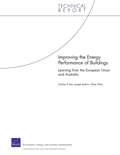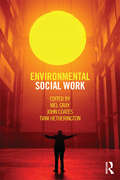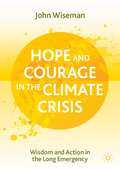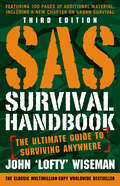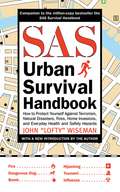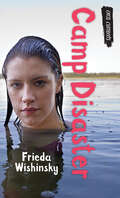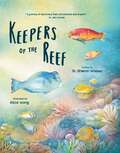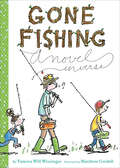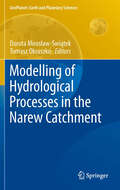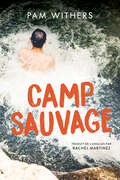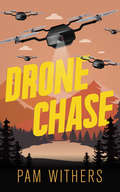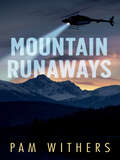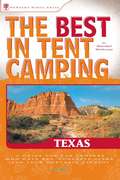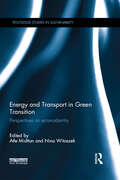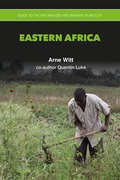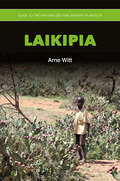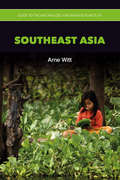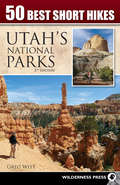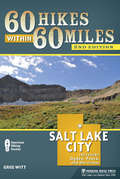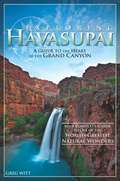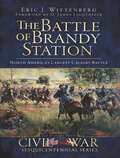- Table View
- List View
Improving the Energy Performance of Buildings
by Oliver Wise Charles P. Ries Joseph JenkinsThis study examines how policies to increase energy efficiency in buildings in the European Union and Australia have worked and draws implications for the design of similar public policies for the United States. It appears that effective policies to promote energy efficiency can be devised using information disclosure, building codes, financial incentives, and benchmarking. Insights are presented to help designers of analogous U.S. policies.
Environmental Social Work: Racial Preference In Black And White (Positions: Education, Politics, And Culture Ser.)
by Tim J. WiseSocial work has been late to engage with the environmental movement. Often working with an exclusively social understanding of environment, much of the social work profession has overlooked the importance of environmental issues. However, recently, the impact of and worldwide attention to climate change, a string of natural disasters, and increased understanding of issues around environmental justice has put the environment, sustainability, and well-being in the spotlight. Divided into three parts, this field-defining work explores what environmental social work is, and how it can be put into practice. The first section focuses on theory, discussing ecological and social justice, as well as sustainability, spirituality and human rights. The second section comprises case studies of evolving environmental social work practice. The case studies derive from a range of areas from urban gardens and community organizing to practice with those affected by climate change. The final section – relevant to students and lecturers – looks at learning about environmental issues in social work. Environmental Social Work provides an integrated theoretical and practical overview of why and how social work might respond to environmental factors affecting the societies and people they work with at international, national, local and individual levels.
Hope and Courage in the Climate Crisis: Wisdom and Action in the Long Emergency
by John WisemanAs the risks of the climate crisis continue to grow, so too do the challenges of facing a harsh climate future with honesty and courage; justice and compassion; meaning and purpose. Hope and Courage in the Climate Crisis explores diverse sources of learning and wisdom –from climate scientists and activists; philosophers and social theorists; Indigenous cultures and ways of life; faith based and spiritual traditions; artists and writers –which can help us live courageous, compassionate and creative lives in a world of rapidly accelerating climatic and ecological risk.Accelerating the transition to a just and resilient zero-carbon society will require visionary leadership and courageous collective action. Awareness that rapid action might still be insufficient to prevent severe and irreversible social and ecological damage is however a source of deep concern for many people passionately committed to decisive climate action. Drawing on broad experience as a climate activist, researcher and policy maker John Wiseman provides a wide ranging, accessible and provocative guided tour of ideas which can inspire and sustain radical hope and defiant courage in the long emergency which now lies before us.
SAS Survival Handbook, Third Edition
by John 'Lofty' WisemanThe ultimate guide to surviving anywhereUpdated to reflect the latest in survival knowledge and technology, and covering new topics such as urban survival and terrorism, the internationally bestselling SAS Survival Handbook is the definitive resource for all campers, hikers, and outdoor adventurers. From basic campcraft and navigation to fear management and strategies for coping with any type of disaster, this complete course includes:Being prepared: Understanding basic survival skills, like reading the weather, and preparation essentials, such as a pocket survival kit.Making camp: Finding the best location, constructing the appropriate shelter, organizing camp, staying warm, and creating tools.Food: What to eat, what to avoid, where to find it, and how to prepare it.First aid: A comprehensive course in emergency/wilderness medicine, including how to maximize survival in any climate or when injured.Disaster survival: How to react in the face of natural disasters and hostile situations--and how to survive if all services and supplies are cut off.Self-defense: Arming yourself with basic hand-to-hand combat techniques.Security: Protecting your family and property from intrusion, break-ins, and theft.Climate & terrain: Overcoming any location, from the tropics to the poles, from the desert to the mountains and sea.
SAS Urban Survival Handbook: How to Protect Yourself Against Terrorism, Natural Disasters, Fires, Home Invasions, and Everyday Health and Safety Hazards
by John Lofty" WisemanJohn "Lofty" Wiseman is the author of the bestselling SAS Survival Handbook, the definitive guide to survival in the wild from Britain's Special Air Service. Now he has compiled a complete guide to survival in the urban jungle. Every year in America there are thousands of fatal accidents in the home—more than on the roads, and many more than in the great outdoors. Fire, electricity, water, gas, sharp knives, poisons, chemicals—these valuable tools can quickly become dangerous weapons when not treated with proper respect and understanding. Add to these the risks of travel, terrorism, muggings, rape, tsunamis, and earthquakes. We are constantly reminded that the world is a dangerous place. Wiseman shows readers how to think realistically and practically about these perils in order to avoid them, whether they are at home, on the street, in school, or in transit. From self-defense techniques to home security systems to coping with natural disasters, this book will teach readers to recognize risks, make quick decisions, and live confidently in the modern urban world.
Writing Metamorphosis in the English Renaissance
by Susan WisemanTaking Ovid's Metamorphoses as its starting point, this book analyses fantastic creatures including werewolves, bear-children and dragons in English literature from the Reformation to the late seventeenth century. Susan Wiseman tracks the idea of transformation through classical, literary, sacred, physiological, folkloric and ethnographic texts. Under modern disciplinary protocols these areas of writing are kept apart, but this study shows that in the Renaissance they were woven together by shared resources, frames of knowledge and readers. Drawing on a rich collection of critical and historical studies and key philosophical texts including Descartes' Meditations, Wiseman outlines the importance of metamorphosis as a significant literary mode. Her examples range from canonical literature, including Shakespeare's A Midsummer Night's Dream and The Tempest, to Thomas Browne on dragons, together with popular material, arguing that the seventeenth century is marked by concentration on the potential of the human, and the world, to change or be changed.
Camp Disaster (Orca Currents)
by Frieda WishinskyCharlotte Summers is sure that summer camp is going to be a disaster. And she's right. But it's not as disastrous for her as it is for her counselor, Marla. Marla has no control over the girls in her charge. The control is held by the cabin's mean girl. Charlotte realizes that she could tip the balance of power and unseat the bully, but does she have the courage to go for it?
Keepers of the Reef
by Sharon WismerTakes children to the underwater world of Australia's Great Barrier Reef for a prime example of how a complex ecosystem depends on its keystone species. Sharon Wismer—reef ecologist and mom—is the best tour guide a kid could have for a visit to the underwater world of Australia’s Great Barrier Reef. Alice Wong’s richly detailed, accurate watercolors take a boy and girl snorkeling to see the fishes that maintain the ecological balance between the corals and their main competitor, algae. Without the fish species that brush, crop, scrape, excavate, and browse the algae, coral reefs would die. A coral reef is a brilliant and colorful example of how a complex ecosystem functions and why its keystone species are critical to its health. The Great Barrier Reef is one of Earth’s most celebrated natural treasures. Here children discover why the reef is threatened and what we can all do to help protect it. Endorsements are coming from Charlie Veron (“the godfather of coral,” featured in the 2017 film Chasing Coral) and David Bellwood, a world-renowned reef fish ecologist whose lab is the source of much of the information in this book. Keepers of Reef is the rare children’s book combining cutting-edge science with narrative and pictorial magic. Thorough backmatter sources and resources are included.
Rain Player
by David WisniewskiTo bring rain to his thirsty vil¬lage, Pik challenges the rain god to a game of pok-a-tok.
Gone Fishing: A Novel in Verse
by Tamera Will WissingerNine-year-old Sam loves fishing with his dad. So when his pesky little sister, Lucy, horns in on their fishing trip, he’s none too pleased: “Where’s my stringer? / Something’s wrong! / The princess doll does not belong!” All ends well in this winsome book of poems—each labeled with its proper poetic form, from quatrain to tercet. Together the poems build a dawn-to-dusk story of a father-son bond, of sibling harmony lost and found—and most of all, of delicious anticipation. Charming line drawings animate the poetry with humor and drama, and the extensive Poet’s Tackle Box at the end makes this the perfect primer to hook aspiring poets of all ages.
Gone Fishing: A Novel (Into Reading, Trade Book #9)
by Tamera Wissinger Tamera Wizssinger Matthew CordellNIMAC-sourced textbook. Nine-year-old Sam loves fishing with his dad. So when his pesky little sister, Lucy, horns in on their fishing trip, he’s none too pleased. All ends well in this winsome book of poems—each labeled with its proper poetic form. Together the poems build a dawn-to-dusk story of a father-son bond, of sibling harmony lost and found—and, most of all, of delicious anticipation. Charming line drawings animate the poetry with humor and drama, and the extensive Poet’s Tackle Box at the end makes this the perfect primer to hook aspiring poets of all ages.
Modelling of Hydrological Processes in the Narew Catchment
by Dorota Świątek Tomasz OkruszkoSince climate and land use strongly affect the runoff pattern and intensity of solute export, it is likely that some observations and conclusions formulated on the basis of investigations carried out in forested catchment may not be fully adequate to describe controls on solute export from agricultural watersheds. The primary objective of the present research is to better understand the flow paths that affect the fluxes of dissolved compounds from a small agricultural catchment during snowmelt. This book focuses on spring snowmelt, because this is the dominant hydrological event in many moderate and high latitude catchments and, thus, is regarded as a prominent factor influencing the quality of surface waters
Camp Sauvage (Orca Currents en Français)
by Pam WithersWill est persuadé que ses parents ne veulent rien savoir de lui. Quand il n’est pas à l’école, Will se retrouve seul et, l’été, ses parents l’envoient au camp de vacances. Mais il a maintenant quatorze ans et s’estime trop vieux pour y aller. Alors quand ses parents ignorent ses protestations et l’y envoient quand même, l’adolescent élabore un plan : il va s’évader en canot et passer le reste de ses vacances seul dans le bois pour afficher son indépendance. Son plan se complique quand son compagnon de cabane l’oblige à l’emmener. Les choses se mettent à aller de mal en pis La situation empire davantage lorsqu’ils doivent affronter la rivière impitoyable pour survivre.
Drone Chase
by Pam WithersRay will need every ounce of his drone skills and outdoor smarts to recover his missing bear cub before poachers get to it first.When his orphan bear cub goes missing, sixteen-year-old drone enthusiast Ray McLellan decides to use his airborne spying skills to find it. Little does he know that an evil bear-poaching gang operating in the surrounding forest has drones, too — and a cold welcome for those who would attempt to take them down.As a New York City kid recently forced to move to the Great Bear Rainforest by his parents, Ray doesn’t have a lifetime of outdoor instincts or familiarity with the valley and its wildlife. That makes him very different from his grumpy grandfather, who — like his new school friends — berates his city-kid uselessness at every opportunity. Can Ray use his drones and smarts to prove himself, find his cub, and expose what’s going on in the woods?
Mountain Runaways
by Pam WithersWill their wilderness skills be enough to survive the dangerous Rocky Mountains?First a Canadian Rockies avalanche kills their parents. Then Children’s Services threatens to separate them. That’s when the three Gunnarsson kids decide to run away into the mountains and fend for themselves until the oldest turns eighteen and becomes their legal guardian. Not many would dare. But Jon, Korka, and Aron’s parents ran a survival school.Turns out their plan is full of holes. When food and equipment go missing and illness and injury strike, things get scary. They’re even less prepared for encounters with dangerous animals and a sketchy woods dweller. On top of that, grief, cold, hunger, and sibling infighting threaten to tear them apart, while the search parties are closing in on them. Do Jon, Korka, and Aron really have what it takes to survive?
Environment: The Science Behind the Stories (Second Edition)
by Jay Withgott Scott Brennan"Environment: The Science Behind the Stories" is an introductory textbook that uses case studies and real data to demonstrate the role of science in identifying and solving pressing environmental problems. The book integrates case studies into the body of the text to provide a contextual framework for the science readers are learning. With only 22 chapters, this book avoids the encyclopedic approach of other textbooks on the market. A panoramic view of environmental science and issues, including the important policy, economic, and ethical issues behind the scientific ones. For college instructors, students, and anyone interested in environmental science and issues.
The Best in Tent Camping: Texas
by Wendel WithrowAs with all books in this series, the campgrounds selected for The Best in Tent Camping: Texas had to meet three criteria: they had to be accessible by car but not overrun with RVs; offer great scenery; and be as close as possible to a wilderness experience. Texas, with its extraordinary diversity of ecosystems, made author Wendel Withrow's search an exciting one. Divided into the state's major geographical areas, the book is based on the author's 30 years' experience in following the back roads of Texas. Along with a detailed profile and useful at-a-glance information, clear maps show campground layout, individual sites, and key facilities. Driving directions supplemented with GPS-based coordinates for each campground entrance make getting there a snap. Regional maps and a profile numbering system make the book easy to use and enjoy.
Energy and Transport in Green Transition: Perspectives on Ecomodernity (Routledge Studies in Sustainability)
by Nina Witoszek Atle MidttunThis book breaks new ground in the studies of green transition. It frames the ongoing transformation in terms of a "battle of modernities" with the emerging vision of ecomodernity as the final destination. It also offers a systematic exploration of the potential for extensive transformation of carbon-intensive sectors – with a focus on energy and transport – towards a low or post-carbon economy. The book does so in a comparative perspective, by pointing to a diversity of techno-economic and institutional solutions in the mature Western economies, and in the rapidly growing East and developing South. The contributors highlight a broad spectrum of available alternatives as well as illuminate conflicting interests involved. They also demonstrate how solutions to the climate challenge require parallel technological and governance innovation. The book advocates a new, overarching vision and agenda of ecomodernity – based on a synergistic paradigm-shift in industry, politics and culture – to trigger and sustain the ecological innovation necessary to tip development in a green direction. This vision cannot be monolithic; rather, it should reflect the diverse interests and conditions of the global population. This book is aimed at researchers and postgraduate students of energy, transport, environmental and climate policies, as well as development, environment, innovation and sustainability.
Guide to the Naturalized and Invasive Plants of Eastern Africa
by Arne WittBoth in Ethiopia and in the countries of East Africa, the continuing proliferation and spread of invasive alien species (IAS) is now recognized as a serious problem, which needs to be addressed. While this situation has improved dramatically over the past 10 years, further progress has been hampered by the absence, hitherto, of a comprehensive IAS database for the region. Countries in the region have repeatedly expressed the need for such a database, as a tool to assist in the identification of naturalized and invasive alien plant species, and in understanding their impacts, both existing and potential, while also providing pointers on what can be done to manage such species. This information is seen as essential, not only in enabling countries to develop effective IAS management strategies, but also in helping them to meet their obligations under various international agreements and treaties, including Article 8 (h) of the Convention on Biological Diversity (CBD) and Target 9 of the 2020 Aichi Biodiversity Targets. In providing such a database, this Guide is intended to give the countries of eastern Africa the information they require, in order to be able to develop effective strategies for combating the growing menace posed by invasive alien plants. It is further hoped that this Guide will foster increased regional collaboration, in responding to the challenges of managing shared invasive plant species. The Guide is based on the findings of extensive roadside surveys, carried out throughout the region, and on a review of the literature pertaining to naturalization and/or invasiveness among alien plants in eastern Africa. By this means, scores of exotic plant species were found to have escaped from cultivation, and to have established populations in the 'wild', to the detriment of natural resources and the millions of people in the region who depend on these resources. Included in the Guide are descriptions of roughly 200 exotic plant species which are either invasive already or which are deemed to have the potential to become invasive in the region. The profiled species include aquatic invasive plants or waterweeds (seven species); vines, creepers or climbers (20 species); terrestrial herbs, shrubs, and succulents (more than 30 species of each), and trees (more than 60 species). Also profiled in this Guide are many exotic plant species which, although their current distribution in the region may still be relatively localized, nevertheless have the potential to become considerably more widespread and problematic. The wide range of habitats and climatic conditions found within Ethiopia and across East Africa make the region as a whole particularly prone to invasions by a host of introduced plant species. Such invasions are being facilitated by increased land degradation, especially through overgrazing and deforestation, and also by climate change.
Guide to the Naturalized and Invasive Plants of Laikipia
by Arne WittThe impetus for the development of this Field Guide came about as a result of pleas from the community around the village of Doldol, Laikipia County, to initiate a control programme for Australian prickly pear [Opuntia stricta (Haw.) Haw.; Fabaceae], an invasive plant which was having a dramatic impact on livelihoods. However, a number of other exotic plants, which were less widespread, but had the potential of becoming invasive, were not seen as a potential problem. In order to avoid a similar situation from arising in the future, the community expressed a need for a Field Guide, which would include descriptions of naturalized and invasive species already present in, and those that were most likely to invade Laikipia County and, information on how best to manage them. An additional impetus was to contribute to the four main objectives of the National Strategy and Action Plan for the Management of Invasive Species in Kenya's Protected Areas. The Field Guide contributes in some or other way to all of these objectives which are to (i) Enhance awareness of invasive species to relevant actors; (ii) Prevent new invasions, manage established invasions and rehabilitate degraded habitats; (iii) Enhance research, monitoring and information management on invasive species; and (iv) Enhance capacity, resource mobilization and coordination. Extensive surveys revealed the presence of a number of introduced plant species which had escaped cultivation and established populations in the 'wild' to the detriment of natural resources and the people that depend on them. Introduced succulents, especially those in the genus Opuntia (Cactaceae), were found to be the most widespread and abundant invasive species in the semi-arid regions in the north and east of Laikipia County. Other succulents, those in the genus Bryophyllum (Crassulaceae), were also found to have escaped cultivation and were locally abundant. In the higher rainfall areas to the west and southwest, introduced trees such as black wattle (Acacia mearnsii De Wild.; Fabaceae) and Australian blackwood (Acacia melanoxylon R. Br.; Fabaceae) and the shrubs/climbers, Mauritius thorn [Caesalpinia decapetala (Roth) Alston; Fabaceae] and yellow cestrum (Cestrum aurantiacum Lindl.; Solanaceae), were invasive. Introduced plants, which have the potential to become problematic in Laikipia, unless eradicated or controlled, have also been included in the Guide. This includes species such as famine weed (Parthenium hysterophorus L.; Asteraceae) and 'mathenge' [Prosopis juliflora (Sw.) DC.; Fabaceae], which are already abundant in areas adjoining the County.
Guide to the Naturalized and Invasive Plants of Southeast Asia
by Arne WittDespite the significant impacts of alien plant species (IAS), there has not been a concerted effort to tackle the problem across the region. This can mainly be ascribed to a lack of policy, little awareness and limited capacity at a national and regional level. The UN Environment-Global Environment Facility project, 'Removing Barriers to Invasive Species Management in Production and Protection Forests in SE Asia', which was active in Cambodia, Indonesia, the Philippines and Vietnam, identified these barriers and produced this Guide which will go a long way to creating awareness about invasive plants, their impacts and how best to manage them. This Guide will serve as an invaluable aid in the identification, mapping, monitoring, and management of IAS that are already present in ASEAN member states, or which may become problematic in the future, due to increased trade and travel, economic development and climate change. It is hoped that this Guide would trigger similar efforts in other countries in Southeast Asia as the region moves toward socio-economic integration.
50 Best Short Hikes in Utah's National Parks
by Greg WittUtah's five national parks-Arches, Bryce, Canyonlands, Capitol Reef, and Zion-hold some of the most awe-inspiring geology on the planet. Each park offers visitors the dramatic scenery that invites exploration and discovery.In 50 Best Short Hikes in Utah's National Parks, veteran hiking guide Greg Witt shares the best routes in each park, hikes that are both "must see" and accessible. Park visitors who are short on time will find this book to be the ideal traveling companion, because it quickly helps readers identify the hikes and sights that will make the best use of their time and provide maximum enjoyment.Each hike in the book includes distances, highlights, area maps, and easy-to-follow trailhead directions to make hike selection fast and efficient. Once on the trail, the detailed maps, route description, and interpretive details insure that hikers get the most out of their trip.Even avid hikers and experienced desert explorers will find new insights and discoveries as Witt's interesting and approachable style details the geologic forces that created this landscape. He brings to life the human history-prehistoric cliff-dwellers, native tribes, ranchers, farmers, loggers, miners, and outlaws-that adds to the color of the Colorado Plateau where these five parks are set.
60 Hikes Within 60 Miles: Salt Lake City
by Greg Witt60 Hikes Within 60 Miles: Salt Lake City is the only guidebook that pinpoints the most exceptional hikes in the area. It contains meticulous trail descriptions that range from comfortable strolls for families to difficult treks for those looking for a challenging workout. Extensive key-at-a-glance information makes it easier to choose a hike based on length, difficulty, or scenery. A helpful list of hikes in the front of the book highlights those with special interests - best hikes for children, scenic hikes, hikes good for wildlife viewing, best hikes for runners, and more. Each hike report includes commentary on trailside geology, flowers, and wildlife. Historical notes provide fascinating details about early miners, trailblazers, the Pony Express, and Mormon pioneers.Nestled in the western flank of the Rockies, Salt Lake City provides ready access to a stunning array of hiking options amid alpine lakes, snow-draped mountain peaks, fragrant evergreen forests, deep canyon waterfalls, granite towers, and flowered cirques. Within 60 miles of Salt Lake City there are thousands of square miles of national forest, National Wilderness Areas, state parks and designated recreation areas to explore.Now, with this updated edition of 60 Hikes within 60 Miles: Salt Lake City, whether lacing up boots, stepping into sneakers or strapping on snowshoes, Salt Lake City is even more accessible for hikers.
Exploring Havasupai
by Greg WittDeep in the Grand Canyon lies a place of unmatched beauty; a place where blue-green water cascades over fern-clad cliffs into travertine pools, where great blue heron skim canyon streams, and where giant cottonwoods and graceful willows thrive in the shade of majestic sandstone cliffs. Havasupai is a paradise enveloped in one of the earth's most rugged and parched landscapes. The Havasupai Tribe has never advertised its canyon and has never endorsed a guidebook to prepare visitors for a journey into the Heart of the Grand Canyon - until now. Exploring Havasupai is the essential destination guide for those visiting the area. The guidebook is filled with insider tips, fascinating background, and essential information. It identifies many new hikes, mines, springs and historical sites never before revealed in a Grand Canyon or Havasupai guidebook. Details on canyon geology, weather patterns, and the unique flora and fauna add depth to a hiker's experience. Exploring Havasupai includes detailed maps, trail descriptions, stunning full-color photographs, and intriguing historical insights. This is the must-have guide for canyon visitors, whether arriving by helicopter, on horseback, or on foot.
The Battle of Brandy Station: North America's Largest Cavalry Battle (Civil War Series)
by Eric J WittenbergThis Civil War history and guide examines a major turning point in cavalry combat and includes a GPS guided tour of the battlefield. Just before dawn on June 9, 1863, Union soldiers materialized from a thick fog near the banks of Virginia's Rappahannock River to ambush sleeping Confederates. The ensuing struggle, which lasted throughout the day, was to be known as the Battle of Brandy Station—the largest cavalry battle ever fought on North American soil. These events marked a major turning point in the Civil War: the waning era of Confederate cavalry dominance in the East gave way to a confident and powerful Union mounted arm. Historian Eric J. Wittenberg meticulously captures the drama and significance of these events in this fascinating volume. The GPS guided tour of the battlefield is supplemented with illustrations and maps by master cartographer Steven Stanley.
